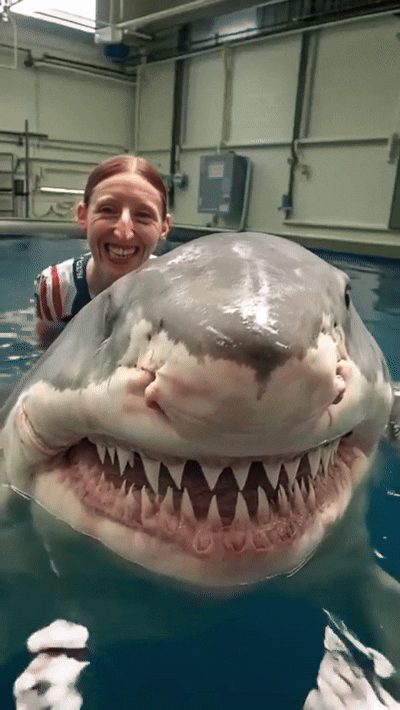ANKARA: A viral image of a woman posing with a shark in an indoor pool has sparked a heated debate about the authenticity of digital images. Despite being clearly marked as AI-generated, the photo left many people questioning their ability to distinguish between real and artificial content.
The Image That Went Viral
The image depicted a woman in a swimsuit happily posing with a shark in a luxury indoor pool. The shark was realistically rendered, making the scene appear almost lifelike. As soon as the image was shared, it quickly spread across social media platforms, capturing the attention of thousands. People marveled at the concept, some enjoying the bold mix of nature and luxury.

However, despite the image’s clear label as AI-created, many users were initially convinced it was authentic. The level of realism in the AI-generated artwork fooled some viewers into believing the impossible scenario was real.
Realistic AI: Friend or Foe?
This viral event is just one example of the growing sophistication of AI-generated content. The ability of artificial intelligence to create strikingly realistic images challenges the lines between what’s real and what’s fabricated. Many have expressed both excitement and concern about this new reality.
For some, the viral shark selfie was an amusing and impressive display of AI’s capabilities. However, others raised concerns about the implications. If AI can now convincingly generate realistic media, what does that mean for the future of journalism, social media, and even public perception?
The ability to deceive and manipulate images raises ethical questions about the creation and distribution of AI-generated content. Could manipulated images be used for misinformation? What happens when virtual content becomes indistinguishable from reality?
Growing Public Awareness of AI in Media
As AI technology continues to evolve, the public’s awareness of its potential impact grows. While some people enjoy the novelty of AI-created content, others are beginning to see the risks.
There has been increasing dialogue about the importance of media literacy in an age of artificial content. Experts suggest that the general public must sharpen their ability to spot AI-generated material, especially as its quality improves rapidly.
Social media platforms, including Instagram and Twitter, are already responding to the situation. Some platforms are exploring ways to flag or mark AI-generated content for transparency. While these measures are promising, it may still be difficult for many to distinguish between real and artificial images.
The Future of AI in Digital Media
The shark selfie that went viral is a stark reminder of the challenges digital media faces in the future. AI technology is improving at a fast pace, and its potential impact on various industries remains vast. From news outlets to entertainment, AI’s reach is already being felt.
It will be crucial for society to understand how AI-generated media can be both beneficial and harmful. As debates around digital media authenticity continue to unfold, the real task ahead may lie in finding a balance between innovation and responsibility.
The viral image of a woman with a shark serves as a symbol of both the endless possibilities and the potential dangers that AI presents in our digital world.











